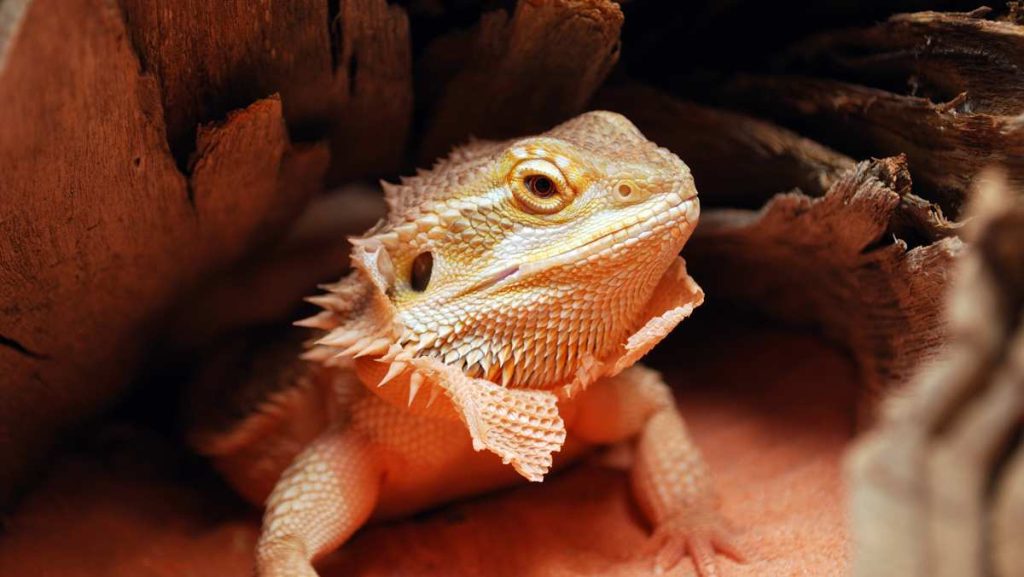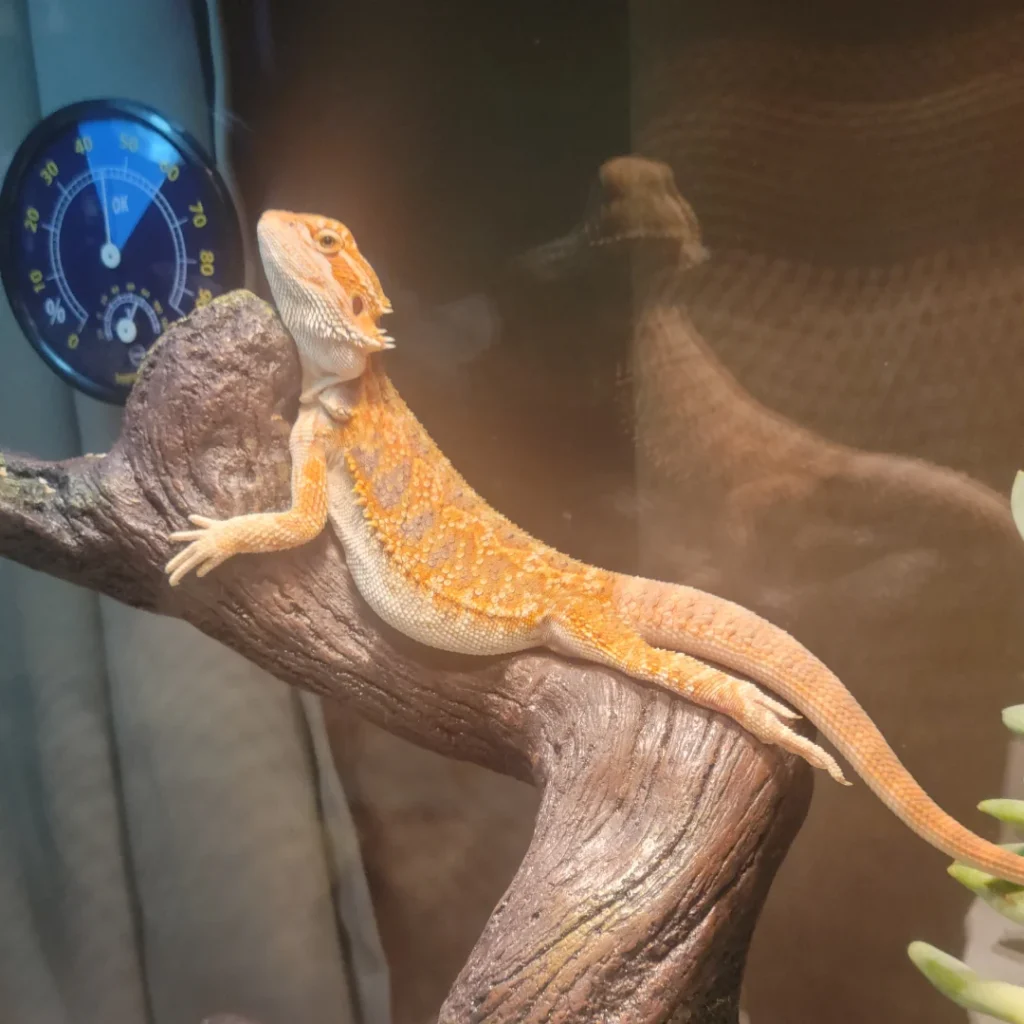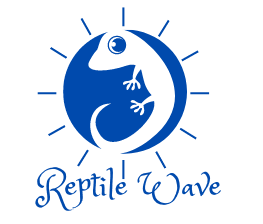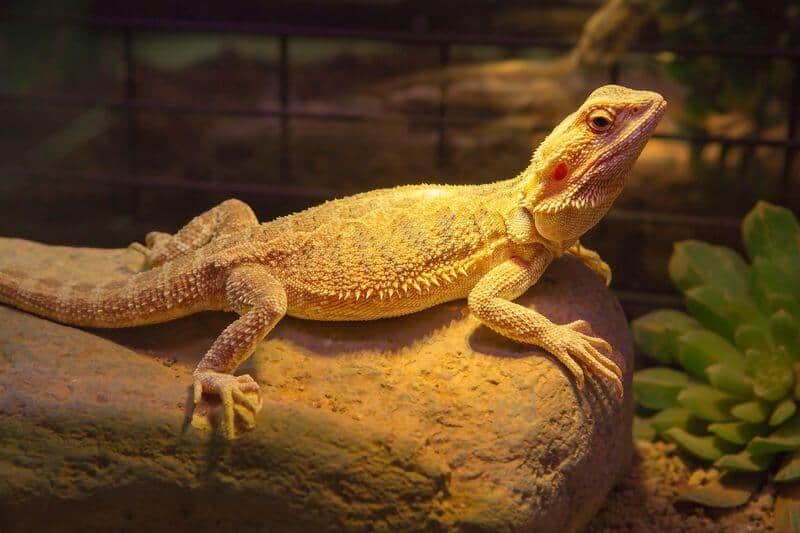Hey there! If you’re taking care of a bearded dragon like mine, you probably know how important it is to keep them comfortable. Bearded dragons, like my buddy Spike, rely on the right temperature to stay healthy and happy. They can’t regulate their body temperature like we can. So, it’s up to us to create the perfect environment for them.
“What Temperature Will Kill A Bearded Dragon?” A bearded dragon can die if the temperature goes above 110°F (43°C) or below 65°F (18°C) for too long.
In this guide, I’ll share everything you need to know about keeping your bearded dragon safe and comfortable. Let’s explore the ideal temperature ranges and essential tips to ensure your pet’s safety.
How To Tell If Bearded Dragon Is Too Hot?

Understanding your bearded dragon’s temperature cues can be key to ensuring their well-being. Here’s how you can recognize signs that your pet might be feeling too warm
Behavioral Signs
- Your bearded dragon may move toward cooler parts of its enclosure. It will move away from the basking spot.
- Excessive movement or pacing can indicate discomfort due to high temperatures.
- Bearded dragons may open their mouths and breathe heavily to release excess heat.
Physical Signs
- They may darken their coloration, especially on their underside, to absorb less heat.
- When your bearded dragon moves less and seems hesitant to move, it could mean they’re too hot.
- Hot temperatures can make bearded dragons less hungry.
How To Tell If Bearded Dragon Is Too Cold?

Is your bearded dragon feeling too cold? Look closely at how they act and look. Let’s take a closer look at the signs if your pet feels too cold
Behavioral Signs
- If your bearded dragon spends extended periods under the heat lamp or basking spot, it may be trying to warm up.
- Cold temperatures can slow down their metabolism, leading to reduced activity levels.
- They may curl up or stay close to heat sources in an attempt to regulate their body temperature.
Physical Signs
- Bearded dragons may become paler in color, especially on their underside. They do this when they are too cold.
- If you see your bearded dragon visibly trembling or shivering, it means they’re trying to warm up.
- Their limbs and tail may feel cold to the touch compared to their normal warmth.
Temperature Requirements For Different Life Stages?
Bearded dragons need different temperatures as they grow. They have specific needs as hatchlings, juveniles, and adults. Here is a standard table that summarizes the temperature needs for different life stages of bearded dragons.
| Life Stage | Basking Spot Temperature | Cool Side Temperature | Nighttime Temperature |
| Hatchlings (0-3 months) | 105°F to 110°F (40°C to 43°C) | 80°F to 85°F (27°C to 29°C) | 70°F to 75°F (21°C to 24°C) |
| Juveniles (3-12 months) | 95°F to 105°F (35°C to 40°C) | 75°F to 85°F (24°C to 29°C) | 65°F to 75°F (18°C to 24°C) |
| Adults (12+ months) | 90°F to 100°F (32°C to 38°C) | 75°F to 80°F (24°C to 27°C) | 65°F to 75°F (18°C to 24°C) |
What Happens If A Bearded Dragon Gets Too Hot?
If your bearded dragon gets too hot, this can cause many problems. They struggle to control their body temperature well.
Your bearded dragon may experience heat stress, where their body temperature rises excessively. This can lead to dehydration, lethargy, and weakness.
High heat can speed up their metabolism. This can cause digestive issues. And it leads to nutrient deficiencies if they cannot digest food.
Also, they may become restless, agitated, or exhibit frantic movements as they try to cool down.
In severe cases, prolonged exposure to extreme heat can lead to heat stroke. Symptoms include rapid breathing, open-mouth breathing, loss of coordination, and collapse.
High temperatures for a long time can hurt organs like the liver and kidneys. This harm can affect their health.
What Happens If A Bearded Dragon Gets Too Cold?
If your bearded dragon gets too cold, it can lead to several problems. They rely on external sources to control their body temperature.
Cold temperatures can slow your bearded dragon’s metabolism. This affects their ability to digest food. It leads to digestive issues. They may become lethargic and less active as their body attempts to conserve energy.
Also, cold temperature can weaken their immune system. This makes them more likely to get infections and illnesses. Your bearded dragon might look for warmer spots or curl up to keep warm.
Being exposed to cold temperatures for a long time can cause cold stress in bearded dragons. This slows down their body functions a lot and could cause serious health problems.
How To Maintain The Right Temperature For Your Bearded Dragon?

You must keep the right temperature for your bearded dragon. It involves several important steps to keep them healthy and well. Let’s explore the steps how can you maintain the right temperature.
Provide Proper Heating
Use heat lamps, ceramic heat emitters, or under-tank heating pads. They create a gradient of temperatures in the enclosure. This includes a basking spot where temperatures range between 95°F to 110°F (35°C to 43°C) during the day.
Use Thermometers
Put digital thermometers at both the basking spot and cooler areas. Use them to monitor temperatures often. This helps ensure the temperature remains within the optimal range.
Adjust Lighting
Use UVB bulbs to provide essential ultraviolet light for your bearded dragon’s health. Position these bulbs according to manufacturer guidelines to ensure adequate exposure without overheating.
Create a Thermal Gradient
Ensure your bearded dragon’s habitat has cooler areas. They should be between 75°F to 85°F (24°C to 29°C). There, they can regulate their body temperature as needed.
Nighttime Temperatures
Allow nighttime temperatures to drop a bit. The ideal range is 65°F to 75°F (18°C to 24°C). This helps mimic natural conditions and encourages their natural behaviors.
Monitor Regularly
Check temperatures daily. Also, adjust the heating and lighting as needed. Do this especially during seasonal changes or fluctuations in room temperature.
What Equipment Is Needed For A Bearded Dragon Heating System?
You need a few key pieces of equipment. They will set up a proper heating system for your bearded dragon. They ensure their habitat keeps the right temperature gradients.
Heat Lamp or Ceramic Heat Emitter (CHE)
A heat source, like a heat lamp with a proper bulb or a CHE, provides the needed warmth for your bearded dragon’s basking spot. Ensure it emits heat without light if needed during nighttime. .
UVB Bulb
A UVB bulb is vital for your bearded dragon’s health. It simulates sunlight and helps them make vitamin D3. This is key for absorbing calcium. Choose a bulb suitable for reptiles, typically rated around 5% to 10% UVB output.
Thermometers
Digital thermometers are critical for monitoring temperatures within the enclosure. Place one at the basking spot and another at the cooler end to ensure proper temperature gradients.
Timer
A timer ensures consistent light and heat cycles. It mimics natural day and night. This is essential for maintaining your bearded dragon’s biological rhythms.
Substrate
Choose a substrate that retains heat well. Good options include ceramic tiles or reptile carpet. They help keep the floor at stable temperatures.
Temperature Controller (optional)
You can use a temperature controller for precise control. It maintains stable temperatures and prevents overheating. This is useful for heating devices like CHEs or heat mats.
Heat Mat (optional)
If more warmth is needed, especially at night or in parts of the enclosure, a heat mat under the tank can add heat.
FAQ
Regularly check the temperature in your bearded dragon’s enclosure. Do this several times daily, especially morning, midday, and evening. Watching temperature changes helps you quickly adjust and keep your pet comfortable and healthy.
A healthy adult bearded dragon can tolerate cooler temperatures for a short period, around 24 hours, if the room temperature isn’t too cold.
The best heat sources for bearded dragons are heat lamps with proper bulbs, ceramic heat emitters (CHEs), or under-tank heating pads.
Yes, absolutely. Bearded dragons can overheat if their enclosure temperatures are not properly regulated. Overheating can lead to dehydration, lethargy, and even death.
Bearded dragons can tolerate cooler temperatures for a while, but not more than 24 hours They are native to warm deserts and cannot tolerate cold temperatures for long.
Final words
Overall, keeping your bearded dragon happy and healthy depends on one thing. You must control the temperature. Remember, bearded dragons can’t regulate their body heat themselves.
So, what temperature will kill a bearded dragon? It’s important to avoid both extremes. If it gets too hot (above 110°F or 43°C), they can overheat and even die. Conversely, if it gets too cold (below 65°F or 18°C), they can’t digest food properly and become susceptible to illness.
By following the tips in this guide, you can create the perfect temperature gradient in your bearded dragon’s enclosure. This will ensure a happy and healthy pet!

